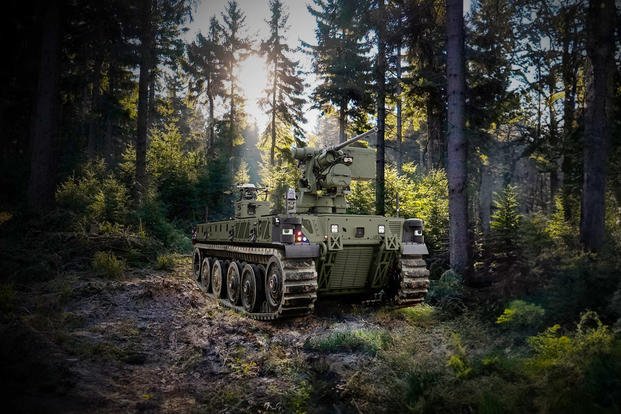Editor’s note: This is the fourth in a four-part series on the Army’s Robotic Combat Vehicle program.
Forget about the air show and the 1980s kids clothing: The Oshkosh you need to know about is the automaker. Oshkosh doesn’t build passenger vehicles, so the only time you’re likely to run into one on the road is when the post office makes a delivery with the goofiest-looking mail truck of all time.
For U.S. service members, there’s more to the story. Oshkosh Defense has built some of the greatest wheeled vehicles the U.S. military has ever fielded. The Marine Corps owes its beloved Medium Tactical Vehicle Replacement (MTVR) (better known as the seven-ton), Mine-Resistant Ambush Protected truck (MRAP) and the Joint Light Tactical Vehicle (JLTV) to Oshkosh Defense. The company also builds the Army’s Heavy Expanded Mobility Tactical Truck (HEMTT).
Now there’s something new on the horizon. This vehicle has a hybrid powertrain, tracks instead of tires and a crew of zero. Oshkosh calls it the Robotic Combat Vehicle, or RCV.
Related: The TRX Wants to Take a Bite Out of the Enemy
The Army’s RCV Program Is Up and Running
After seeing how effective unmanned drones can be on the battlefield, it was only a matter of time before senior military leadership called for the same kind of capabilities in ground vehicles.
In 2023, the Army selected four companies to compete for the job of building the future Robotic Combat Vehicle (RCV). In the announcement for Phase I testing, Maj. Gen. Glenn Dean, the program executive officer for ground combat systems, pointed out that developing novel technology requires thinking outside the box.
“The Army of 2030 and beyond will rely on systems with advanced technology and growth potential,” he said. “These are often developed by traditional and non-traditional business.”
The field of competing prototypes includes the Oshkosh Defense RCV, General Dynamics Land Systems TRX, McQ WOLF-X and Textron Systems Ripsaw M3. Yeah, like that Ripsaw.
According to a report from the Congressional Research Service, testing is scheduled for the fall of 2024, and the first operational vehicles are scheduled to hit the field in fiscal year 2028. Whichever company earns the Army’s business will walk away with a combined base award valued at more than $24 million, according to an Army release.
Related: Sic ‘Em! Will the WOLF-X Be the Army’s Next Attack Dog?
Meet Oshkosh Defense’s Fighting Robot
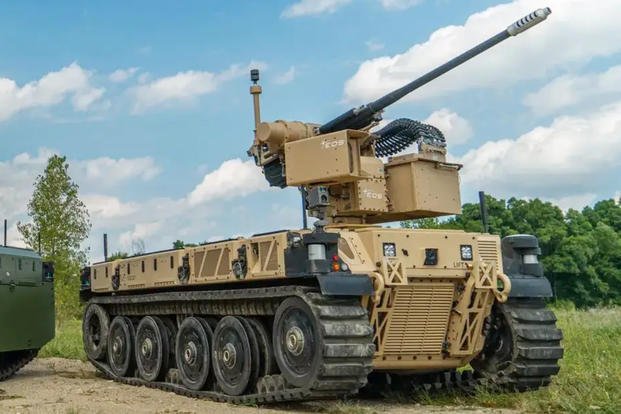
Here’s the thing about prototypes: The people developing them tend to play their cards very close to the vest. With the Army’s future robotics business on the line, you can understand why. Luckily, we can put some pieces together to get an idea of what the RCV is made of.
Oshkosh Defense mobilized Pratt Miller Defense (an Oshkosh subsidiary) and partnered with QinetiQ to integrate cutting-edge powertrains, autonomous capabilities, cyberwarfare capabilities and conventional weapons systems into the RCV.
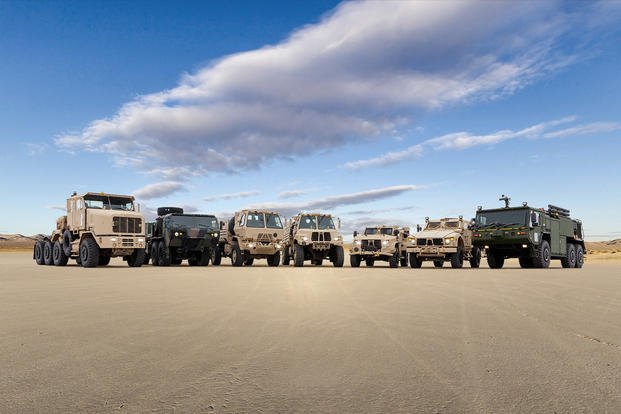
That tracked platform is a derivative of Pratt Miller Defense’s Expeditionary Modular Autonomous Vehicle. That vehicle was released in 2017, according to an Oshkosh Defense release published by Breaking Defense. Its diesel-electric hybrid powertrain can speed the EMAV along at more than 50 mph and cover more than 200 miles without stopping for fuel or charging. It can carry 6,000 pounds and stuff itself inside a CH-47.
The flat-topped architecture creates a blank canvas for forward units to customize, and the EMAV brochure offers a wide range of ideas for different missions. Oshkosh Defense has also presented demo vehicles equipped with systems such as the Kongsberg CROWS-J Javelin missile launcher, M2 .50-caliber machine gun, M230 30-millimeter cannon, a UAV launchpad and a smokescreen system. You know, the essentials.
“The Oshkosh RCV is an evolution of a decade of innovation, development, and testing — and it shows.” Pat Williams, chief programs officer for Oshkosh Defense, said. “Our solution is optimized to exceed the performance requirements and is ready now to meet the demanding program schedule.”
Related: Textron Ripsaw M3: From the Big Screen to the Battlefield
Imagine Tomorrow’s Battlefield
Unmanned vehicles are nothing new in the U.S. military, We’ve had aerial drones overhead for decades. That technology has trickled down so far that adversaries now don’t have to be near-peer to employ their own drones. If you’ve been paying attention to the fighting in Ukraine and the Middle East recently, you know that all it takes is a cheap consumer-grade drone and a grenade to wreak havoc on a modern fighting force.
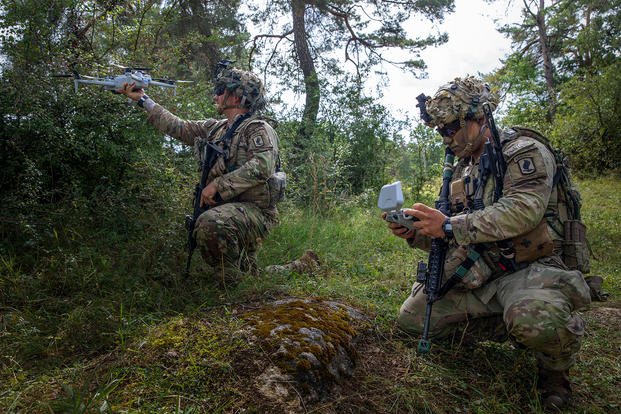
Remotely operated assets are on the rise, but that doesn’t mean future wars will be fought by robot proxies; there will still be American service members in harm’s way. Likewise, robotic vehicles will have to square off against thinking human adversaries with free will, not another autonomous machine.
“Human-machine integrated teams are the future of successful ground combat in the land domain,” Brig. Gen. Geoffrey Norman, the director of the Army’s Next Generation Combat Vehicles Cross Functional Team, said. “Bringing RCVs into our formations will give our soldiers new capabilities to fight and win with the changing character of war.”
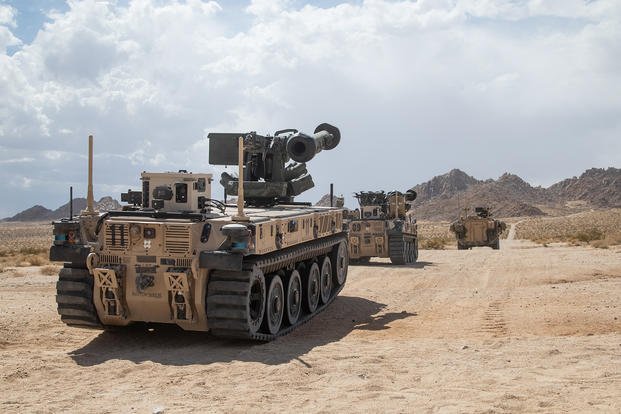
To simulate that, the Army is testing all four RCV prototypes against active-duty units. According to a congressional report, contenders will have to face troops at Fort Stewart, Georgia, and then fight alongside soldiers against an opposing unit at Fort Riley, Kansas.
What’s Next for the Army RCV Program?
It’s one thing to know how a vehicle can perform on a closed circuit or a live-fire range, but it’s a much bigger challenge to deal with real infantry units in a training exercise. This seems like it will be a thorough shakedown.
From everything we’ve seen, it looks as though all four prototypes in contention have something to offer. The Army is trying to identify the best one in an unfamiliar category of vehicles, so there are a lot of unknowns.
When the dust settles, the Army ought to have a good idea of what each RCV prototype is capable of. We should get news of the winner later in 2024.
Want to Know More About the Military?
Be sure to get the latest news about the U.S. military, as well as critical info about how to join and all the benefits of service. Subscribe to Military.com and receive customized updates delivered straight to your inbox.
Story Continues
Read the full article here

